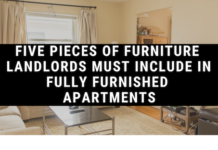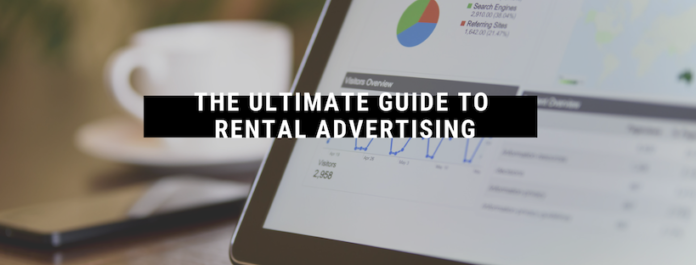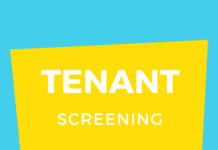A landlord’s job is made infinitely easier when the right tenants are in place. Yet, finding those perfect people or families to fill your properties can be a bigger headache than you might imagine. As market experts continue to impress the fact that, in today’s housing market, it’s wiser to rent than buy a home, rental rates are on the uptick.
Today, we’re sharing a comprehensive guide to turning your rental into the income-generating machine you know it can be, one advertising move at a time.
Ready to learn more? Grab those house keys and let’s dive in.
Why Rental Advertising Matters
The concept is simple: You want as many people as possible to view your listing and become interested in renting your property. When this happens, you’ll widen your pool of applicants and have a greater opportunity to find “the one.”
Conversely, if you choose to forego this route altogether, you’ll be interviewing only the people who drive by your sign in the yard. This is a much smaller circle and leaves you with fewer options. On average, for every month you have a vacant property, it can cost you around $1,500 in cost.
Step 1: Determine Your Local Audience
Before we begin, understand that it’s illegal to withhold a rental opportunity from someone based on their inclusion in a certain group. That said, you cannot and should not be discriminatory in your rental advertising.
Start your approach by considering what type of shared characteristics your renters will likely possess. For instance, if you’re located near a major college or university, a majority of applicants may be students. Or, perhaps your property is located in the middle of a bustling downtown district. In this case, anyone interested will enjoy living in this kind of busy, high-energy environment with easy access to myriad amenities.
Even if you don’t think your property has any ties to a particular demographic, think again. It may be located near a hospital, making it ideal for traveling doctors or nurses looking for short-term apartment rentals. Understanding who will be most interested in your rental is key to determining the best methods of connecting with them.
Step 2: Adjust Your Property Accordingly
Now that you know which populations are likely to be knocking at your door, consider making cost-effective upgrades to your property to make it as attractive as possible.
For instance, if you’re marketing primarily to college students, you’ll need to install plenty of electrical outlets and set up a WiFi network to make schoolwork a breeze. You may even want to add smart home technology like smart locks, thermostats anlights. A traveling healthcare professional won’t be bringing much furniture along, so you’ll need to partially furnish the space. An elderly rental population will require safety features such as handrails and slip-proof bathtub mats.
For the most part, these changes won’t require major renovations or upgrades. It’s simply a matter of taking your target audience into consideration and making simple, cost-effective tweaks to catch their eye.
Step 3: Don’t Forget Traditional Advertising
While the bulk of today’s rental advertising takes place online, there is a place for traditional advertising methods in the mix.
Remember the aforementioned “For Rent” sign? If you have one, don’t throw it away just yet. Especially if the property is on a busy street, it can be a great way to pique interest.
The same applies to printed flyers and advertising spots in local media outlets, such as the newspaper. If the right sets of eyes fall on them, they can be valuable parts of your overall outreach strategy. Yet, to reach their full potential, even printed materials need to be combined with some form of online communication. You can use free tools like canva to make beautifully designed property flyers.
Industry research reveals that 44% of people hop online to research properties before checking them out in person. To this end, a robust digital advertising approach is critical to ensuring your listing is the one they land on. Yet, before you can share your listing across various online platforms, you have to create it first.
Step 4: Create Your Listing, Focus on Pictures
You could be poetic about the features and benefits of your particular rental property, but if your pictures are fuzzy, tiny or depict a sloppy space, those words fall flat.
Put simply, a picture isn’t only worth a thousand words. In the real estate arena, it’s also worth thousands of dollars. If your listing isn’t visually engaging and filled with top-quality photographs of the space, it will fall short of its potential time and again.
For the most part, renters are interested in three things when perusing your listing: The price, location and pictures. Research shows that we now have a shorter attention span than a goldfish. Grab their interest at the onset with slick, detailed pictures that paint your rental in the best light possible.
Step 5: Share Your Listing
Now that your rental listing is ready, where can you share it? It’s no secret that the internet is vast, and strategizing your marketing strategy can feel like taking a shot in the dark.
While it would be ideal if there were one place you could post your listing once, then have it shared across all the applicable real estate websites, that solution isn’t available yet. This is where it pays to know the best rental websites that can maximize your exposure. Here are a few of the top ones:
Rentbits
Our sister site, Rentbits, was one of the first rental advertising sites to syndicate listings to multiple rental listing sites. Over the last 13 years they have continued to be the leader in rental syndication and they currently syndicate to rental sites like Zillow, Trulia, Hotpads, Zumper and more. The rentbits.com search engine also drives over 1MM renters a month looking for their perfect rental.
Zillow Rental Manager
With this tool, you can post your listing one time, and it will automatically be shared across the many sites that are included in the Zillow network. This includes Zillow, Trulia, AOL Real Estate, MSN Real Estate and HotPads, among others. It’s free to list your rental and the setup is simple. Your listing remains active for 30 days.
Apartment-Specific Sites
If you’re interested in renting out your apartment, you can pick from a slew of the best apartment search websites.
While each has its differentiating characteristics, most operate around the same principle. Renters can plug in a price range, location, size and other factors they care about. Then, they’ll view a list of properties that meet these specifications.
Depending on your budget and availability, you can post your listing on any or all of these websites. To narrow the options, consider the type of audience that will most likely frequent each site. For instance, Sotheby’s typically caters to a wealthier renter and buyer audience, while Apartments.com offers a greater range of options for every budget.
Online Classified Websites
Of course, a list of home rental sites wouldn’t be complete without the inclusion of online classified websites, including Craigslist and Facebook Marketplace.
Craigslist is free to use but the platform can be littered with spammy and false advertisements. As such, it’s often wise to keep these placements short and direct viewers back to your website for the full listing. It’s worth it to post here, though, as the site gets more than 30 billion page views every month!
Facebook Marketplace allows property owners to take a more personal, hands-on approach to finding tenants. Here, you can view someone’s social media profile, engage in chat conversations and even upload Facebook Live video chats to your listing.
You can also share your listing across Facebook’s many groups, including yard sale pages and county-specific ones, to narrow in on your local audience. Does your home include a unique feature that some groups may find more appealing than others? Find those associated Facebook groups and reach out to them.
For instance, if the property features a fully equipped playroom, advertise the listing on local parenting pages. Is the craft room top-notch? A nearby DIY group may be all ears.
As with any social media advertising tactic, the more likes, comments and shares your listing can accrue, the more visibility it will garner.
Step 6: Highlight the Screening Criteria
If you have a no-pets policy in your rental, it’s a waste of time to field dozens of calls from tenants with German Shepherds.
Make it easy for online viewers to understand your screening criteria. Use bullets to make the points as easy to digest as possible. Some possible exclusions you might make include:
- No pets
- No smoking
You may also list your required rent-to-income ratio, your lease terms and timeline, and your stance on background checks. By sharing this information in the beginning, you’re more likely to find tenants who can meet all of these requirements and know what to expect moving forward.
To drive the point home, you can include photos in your listing that illustrate your screening criteria. This can be as simple as turning your checklist into an infographic. This way, you’ll appeal to those renters who just skim your listing for visuals without reading the fine print.
You may still get the occasional call asking if you allow smoking or if a cat is OK, but the likelihood is reduced and you can keep your sanity intact.
Step 7: Prepare for the Pre-Screening Phase
Once your rental advertising campaign is underway, you should make sure you’re ready for the interest it will generate. If someone wants to see the property, it should be in clean, viewable condition. If they want more information or more pictures, you should be equipped to provide this information quickly.
Today, rental properties are not overly difficult to come by, though perfect-match renters can be. This is why it pays to cater to the customer, field all inquiries and create a list of possible applicants.
Once this list is ready, you can officially begin the pre-screening process and get one step closer to finding a qualified tenant.
Ace Your Rental Advertising Efforts
Managing a property can be time-consuming, costly and overwhelming. It can also be incredibly profitable and rewarding.
We get it.
We’re here to help you navigate this complex journey, one step at a time. From rental advertising tips to information on renter laws, industry trends and more, we’ve done the research so you don’t have to.
Visit us to learn the latest news surrounding what’s hot, what’s out and what works. Are you a first-time landlord? You don’t have to go at it alone.
Our 10-step checklist takes the guesswork out of the process so you can stop stressing and start making the most of your property. Read through it and take a deep breath. We’re in this together!




















